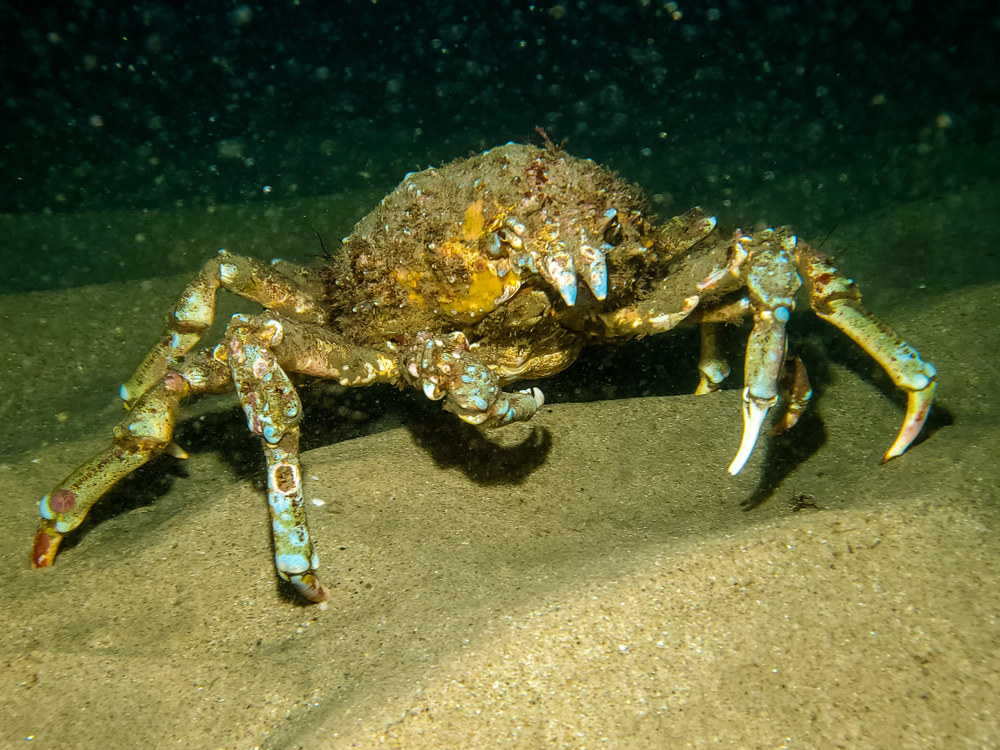Sheep Crab, The Giant Crab of La Jolla
The Sheep Crab, otherwise known by its scientific name, Loxorhynchus grandis, is known as “the giant crab of La Jolla.”
This huge spider crab has an oval carapace covered with spines and tubercles and has a width of about 6 inches. So, it’s no surprise that sheep crabs are the largest species in the family of California spider crabs.
They have a life span of at least four years and prey on carnivores and bottom-dwelling scavengers. In the 1980s, many gillnetters would capture adult male sheep crabs by their claws, which would get tangled in their nets. Catching them was very common and profitable until a California State initiative in 1990 prohibited the use of gillnets in shallow water, which dramatically decrease the number of claws that were caught. Now, capturing sheep crabs isn’t very common, as it is no longer profitable.
Difference Between Males and Females
Males have much more prominent and longer extended claws compared to females. Males’ bodies can grow up to 17 cm as opposed to females’ bodies, which can only grow up to 11 cm. It’s also amazing to note that females can store sperm for the future when there are no male crabs around, so they can continue to fertilize eggs and can lay anywhere from 125,000 to 500,000 eggs!
Juvenile sheep crabs camouflage themselves by hiding between barnacles, hydroids, and algae. However, once they become adults, sheep crabs stopped decorating themselves. They prefer to hide out in reefs and pilings. Both male and female crabs migrate toward shallower water during warmer weather, so it is very common to see them while on a dive in La Jolla.
Book a Dive!
If you want to see “The Giant Crab of La Jolla” in its natural habitat, call (858) 397-8213 to reserve or book online.


